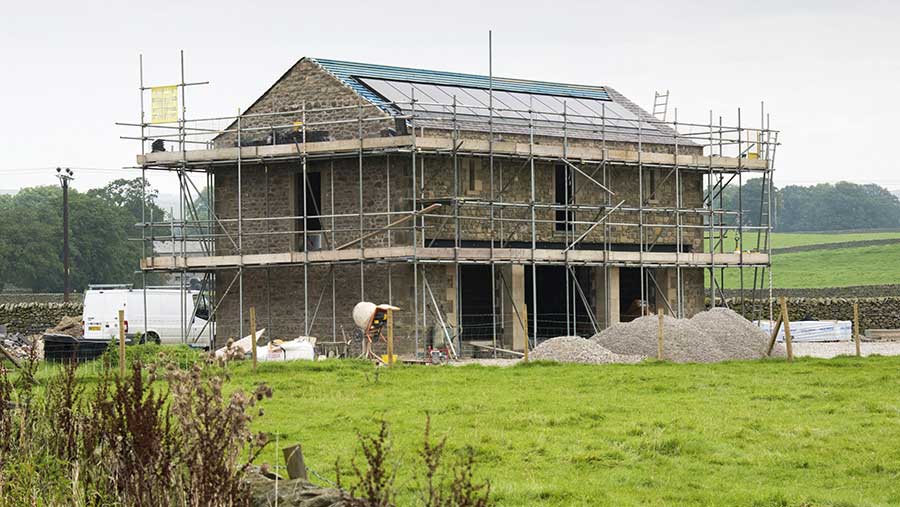How Class Q development rights are working in practice
 © FLPA/Shutterstock
© FLPA/Shutterstock There has been a mixed reception to permitted development rights (PDRs) allowing the change of use of agricultural buildings to residential units, writes Stephanie Baker, senior planning officer at Hart District Council in Hampshire.
Class Q was introduced to benefit landowners, offering them a faster, cheaper and less complex route to housing on their site.
Applicants are pleasantly surprised that they have an option to convert a barn to residential use and sell it on without needing a full planning application, although they are sometimes unaware of how much information still needs to accompany a Class Q submission.
See also: Planning policy changes will have huge effect on landowners
Conversely, neighbours and local planning groups are frustrated with Class Q and see the process as some sort of backdoor route to housing in the countryside.
Lower approval rates
The national statistics show that 7,092 Class Q applications were approved between April 2014 and September 2018, with an average approval rate of 59% over the five years.
In contrast, traditional minor residential full planning applications (for up to 10 dwellings) show a consistent approval rate of around 74%. There have been 186,030 of these approvals over the same period (in urban and rural locations).
Hart District Council has a Class Q approval rate of 66.6% between April 2014 and December 2018, while Basingstoke and Deane Borough Council approved 68.9% of submissions over this period.
These statistics are higher than the national Class Q average, but are still lower than the minor residential planning application approval rates for these councils.
In 2018 the rate of average minor residential approvals for these councils were 73% (Hart) and 78% (Basingstoke and Deane).
Approval rates for Class Q have improved in recent years following updated planning practice guidance, but the overall chances of success for applicants remain low with Class Q.
A great number of the submissions that come in do not comply with the qualifying criteria and applicants choose to withdraw, as opposed to receiving refusals.
What national statistics do not show are the total numbers of submissions and percentage of withdrawals, which form a large portion of what councils deal with.
In practice it is evident that the process is unlikely to be easier, faster or cheaper for farmers compared with a traditional planning application.
Complex issues
Class Q hasn’t increased rural housing delivery or the speed of planning decisions – they are still an eight-week process and there are a high proportion of refusals and withdrawals.
Planners have no discretion if a qualifying condition or parameter is not met and the list of “development not permitted” in Class Q is decidedly inflexible.
Material changes in use from agricultural to residential are not simple issues for which a prior approval process is appropriate.
In practice, Class Q is not resolving the complex issues for rural housing delivery.
Pros and Cons of Class Q |
|
|
Pros |
Cons |
|
Cheaper upfront application fee (£96 for change of use only, £205 for change of use plus building operations) |
Often requires follow-up planning applications to deal with all other development to reach a design the landowner actually wants |
|
Slightly limited technical information to provide up front (e.g. no need for landscaping details) |
Still often requires technical information on noise, contamination flooding etc. |
|
Route for achieving market housing in the countryside without having to meet an exception policy (such as rural worker, affordable housing or specialist accommodation) and with greater value |
Need to demonstrate an agricultural trade or business on a specific date set in the legislation, or the date it was last in use |
|
|
No faster than planning applications |
|
|
Limited building works allowed – can’t involve demolition that isn’t “reasonably necessary”, can’t amount to a rebuild, can’t extend the footprint or roof space |
|
|
Removes agricultural permitted development for the rest of the unit for 10 years. No new agricultural buildings under Part 6 without a full planning application |
Case study
In one case, a farmer submitted a Class Q because they had been successful with this route in other areas of the country.
However, once neighbours were notified, they were infuriated about the process and the limited criteria for assessment.
Multiple neighbours went to the trouble of submitting their own statutory declarations to confirm that the barn did not qualify for Class Q.
The farmer provided some supporting information, which all pointed to a mixed use and hobby farm, rather than a commercial enterprise.
The landowner of the sole access track to the site also came forward to confirm that he provided a right of way to the site currently but would never extend this right of access to Class Q properties.
The submission was withdrawn by the farmer.
